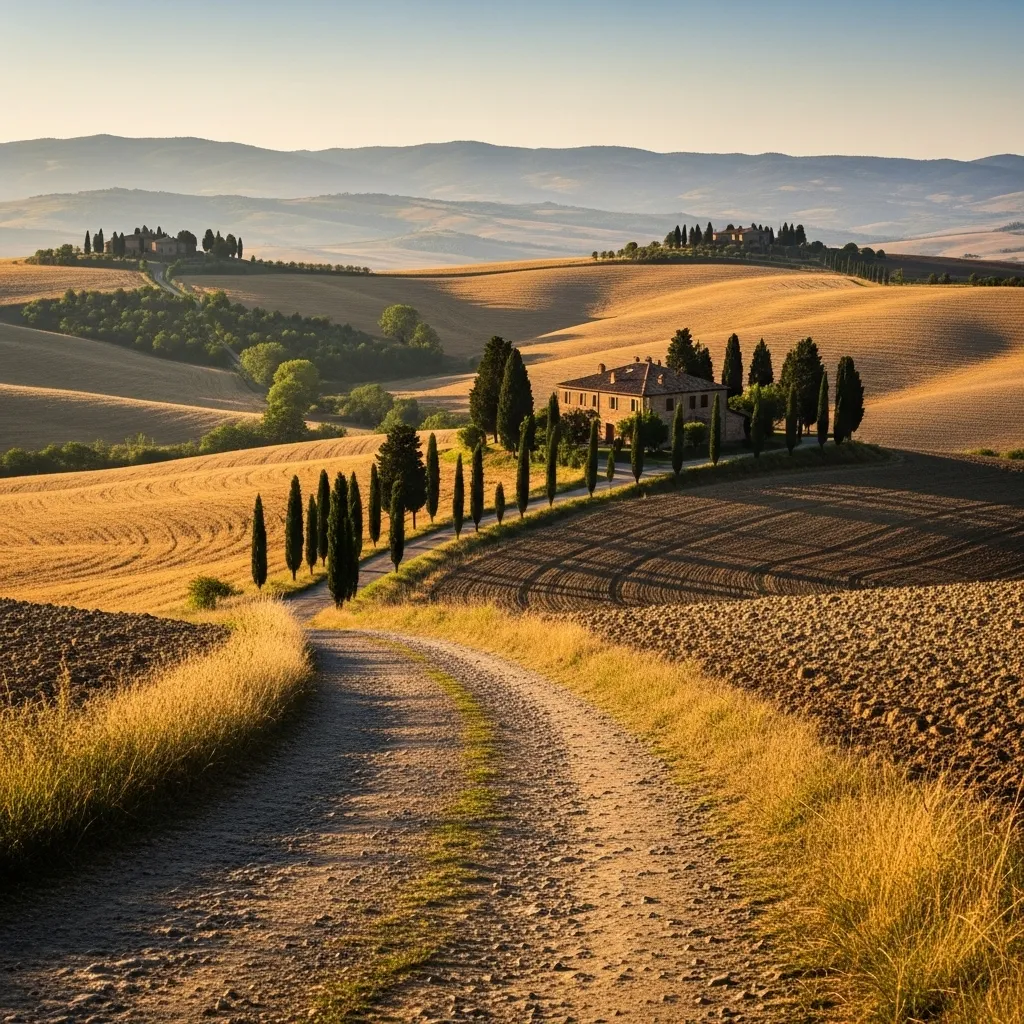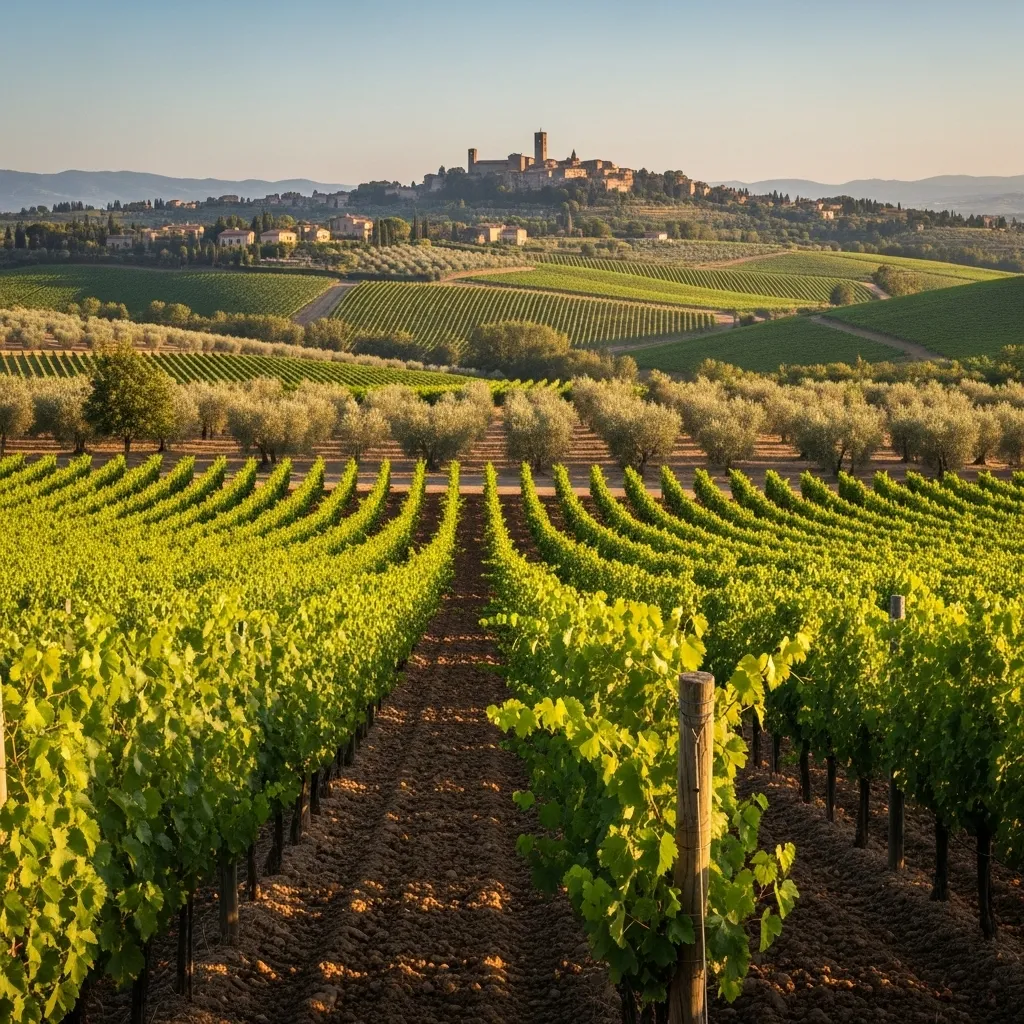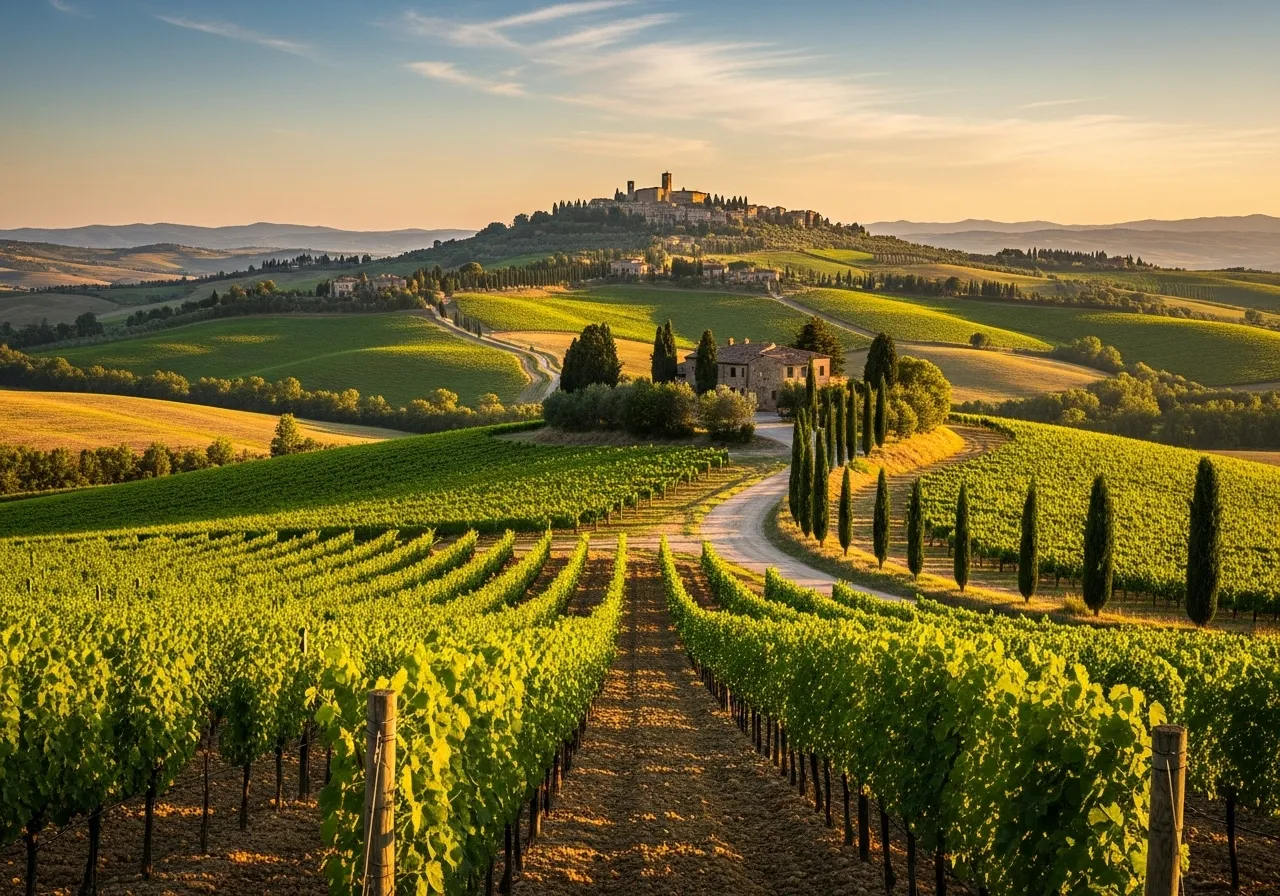Why Visit Tuscany?
Visit Tuscany to experience landscapes and culture you can feel: rolling Chianti vineyards, medieval hill towns and Renaissance art that reward slow exploration.
Start in Florence for the Uffizi and Duomo, then drive or cycle through Val d’Orcia’s cypress-lined roads to see San Gimignano’s towers and Siena’s shell-shaped Piazza del Campo—home of the Palio. Taste seasonal cuisine from market-fresh olive oil and pecorino to rustic ragù; join a cooking class or book a winery tour in Chianti. Soak in Saturnia’s thermal springs or head to Elba for clear-water beaches. Best times are spring and autumn; use trains for city hops and a hire car for the countryside. Book key museums and vineyard visits in advance.

Val d’Orcia, the farmed hills between Pienza and Montalcino, is a UNESCO World Heritage cultural landscape recognized for its Renaissance-era land planning and the historic Via Francigena that crosses it.
Tuscan Country Stays
Choose a rural base in Tuscany for hands‑on food experiences and relaxed days among vines and olive trees. At Fattoria Le Caprine you can join guided tours of the vineyard and cheese‑making areas, meet the goats and sample house wines, cheeses, olive oil and honey; hosts share clear, practical stories about their craft. For a quieter, comfort‑focused stay, Agriturismo Girasole offers well‑appointed apartments, a pool and plenty of outdoor space for reading or evening aperitivi as the sun sets over rolling hills. Both properties are run with warm, attentive hospitality and work well as a three‑to‑five night base for exploring nearby hill towns. Practical tip: book early for summer, and plan to hire a car to make the most of short drives between villages and vineyards.

Brunello di Montalcino is Sangiovese and, by DOCG rules, can’t be released until January 1 of the fifth year after harvest—after at least two years in oak and a minimum four months in bottle (six for Riserva).

